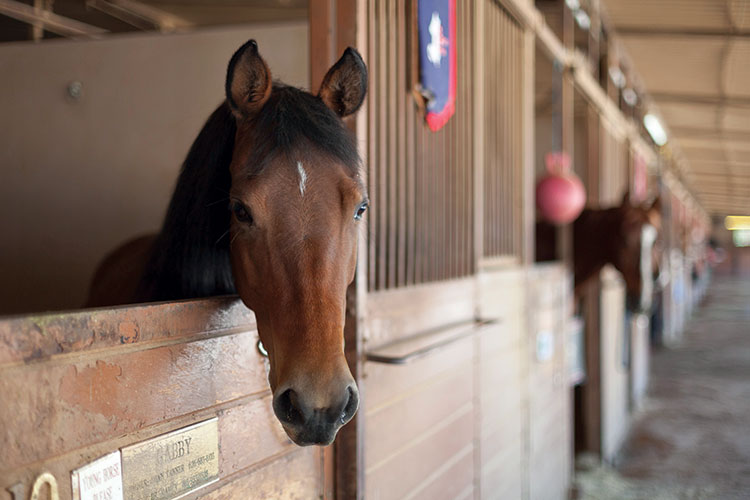By Daniel H. Grove, DVM

The COVID-19 global pandemic has bio-security on everyone’s minds. Let’s revisit biosecurity and you may appreciate similarities between some of the recommendations here for your horse and the ones we are receiving now from the government for ourselves during this outbreak.
First off, make sure you are up to date on your horse’s vaccines. Vaccines are designed to help the body fight off an infectious agent if it comes into contact with it. They usually require 10 to 14 days to work. The body is exposed to the antigen and has two ways it can work to fight it off: The first is to develop antibodies; the second is what is called “cell mediated immunity.” Different vaccines have different protocols to follow for them to be their most efficacious, so either read the full label or have your veterinarian perform the series properly so they are able to give you the best protection possible.
Before traveling with your horse, make sure you look for any signs of disease. If your horse has a cough, fever, nasal discharge, or just general malaise, do not go. It is not worth it. Before traveling out of state, it is REQUIRED to get a Coggins test and veterinary certificate of health. The Coggins is a test for the disease equine infectious anemia. It caused by a virus related to the HIV virus. Once a horse has it, it has it for life. It is transmitted predominately by the horse fly. This quick inspection and test by your veterinarian can stop an outbreak before it begins. Several years back, a horse was allowed to go to a show when it already was under the weather. That mistake cost the lives of many horses at the event that died from the neuropathogenic strain of the equine herpes virus. If the horse was left at home, the outbreak could have been avoided.
When you horses are in a community environment, there are some steps you can take to minimize the risks associated with large groups.
What can you do at the event to protect your horse?
1) Disinfect your stalls. If they have not been stripped, first strip them of any manure and old bedding. Then, using a phenol compound, spray down the entire stall. Make sure to clean out the waterer prior to allowing your horse to drink from it.
2) Limit the contact your horse has with other horses. Do not share community watering troughs. Organisms can be left from previous visitors for your animal to ingest and become infected.
3) When booking your stalls, consider booking two extra stalls so there can be a space between your horse and the neighbors.
4) Do not allow your horse to have nose-to-nose contact with others. Nasal secretions are going to harbor many of the respiratory viruses and bacteria that can infect your horse.
5) Fly control. Battery-operated fly sprayers and removal of the manure to minimize flies and other insects will limit their ability to transfer organisms to your animal.
6) Do not share bridles, brushes or other equipment with others.
7) Limit your exposure to other horses at the events. There are organisms you can transfer from your clothing and skin to your horse if you are around horses that are infected.
8) Social distancing! Yes, I used the new fancy term the government just came up with! Do not allow people to pet or feed your horses. Chances are they were just touching another horse and could transmit something to yours.
If you have been following this column for a while, you notice there is quite a bit of information previously covered. In this time when people are feeling a heightened concern on how to protect themselves, I want to point out you need to look out for your animals also. Complacency in the protection of your animals can lead to their next outbreak! Stay safe out there.
–Dan
Leave a Comment
All fields must be filled in to leave a message.